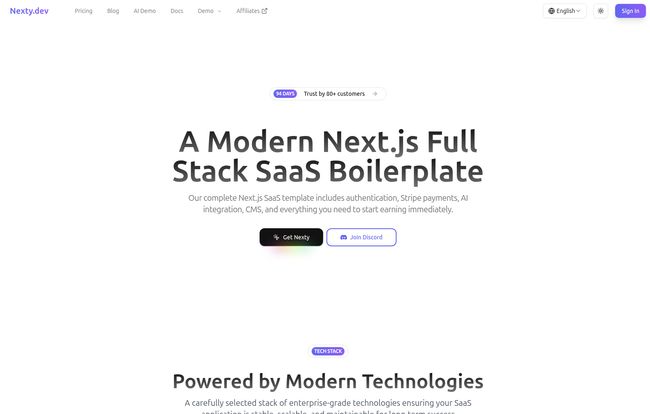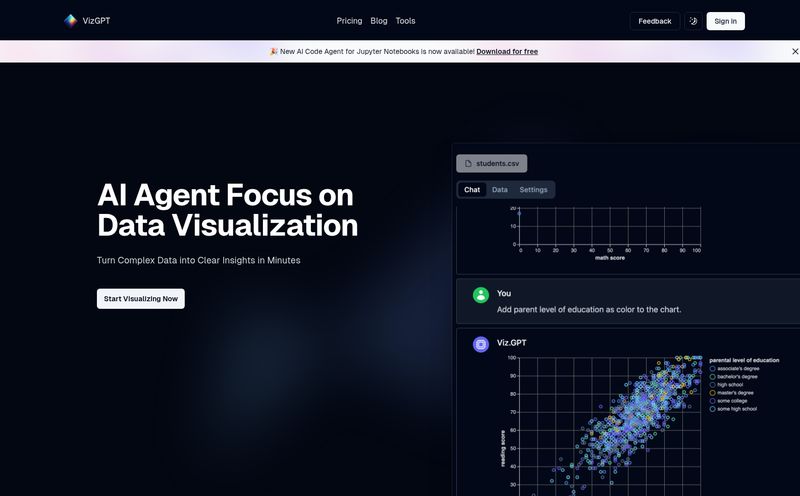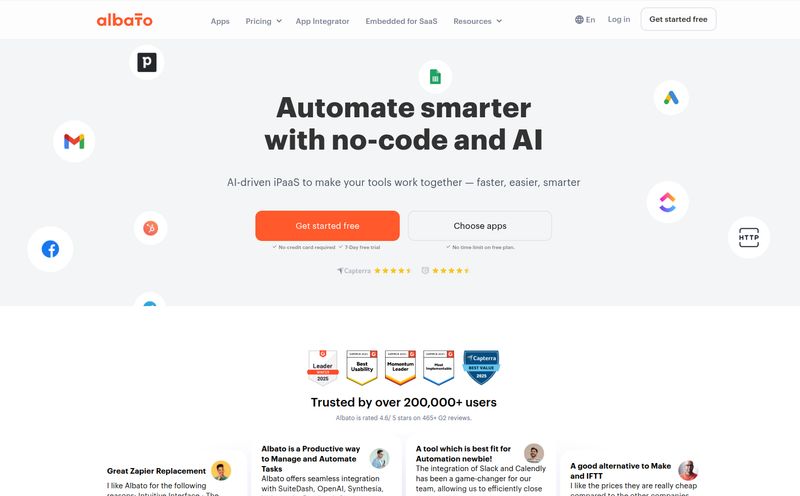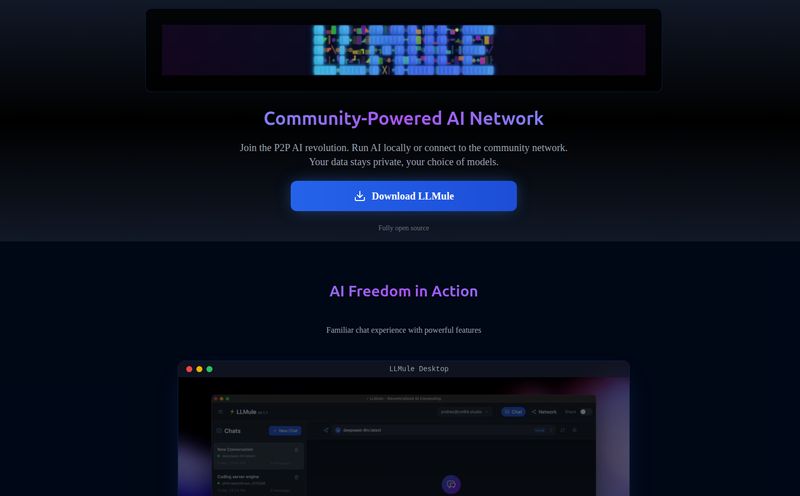We’ve all been there. You get a brilliant idea for a SaaS product. It’s elegant, it’s a problem-solver, and it’s going to be your ticket. You're buzzing with energy, ready to build the core feature that makes your idea unique. You fire up your code editor, type create-next-app, and then... you stop. The dread washes over you.
Oh, right. You need user authentication. And a database. And a way to handle subscriptions. Don't forget user roles, password resets, a user dashboard, and an admin panel to see what's going on. Suddenly, that brilliant, unique feature is weeks away, buried under a mountain of tedious, repetitive, but absolutely necessary, infrastructure work. It’s the part of the process that kills momentum dead.
I’ve been building things on the web for years, and I can tell you, this part never gets fun. It’s the digital equivalent of digging the foundation and laying the plumbing for your dream house. You can't live without it, but nobody ever throws a party to celebrate finishing the sewage lines. That's why I'm always on the lookout for tools that let me skip straight to the fun part. And lately, one name keeps popping up: Nexty.dev.
What Exactly is This Nexty.dev Thing?
In short, Nexty.dev is a full-stack SaaS boilerplate built on a modern tech stack: Next.js and Supabase. Think of it as a professional-grade starter kit for building a software business. It hands you a production-ready application with all that boring (but crucial) stuff already built, wired up, and ready to go.
We’re talking about a complete system for authentication, payments, content management, and more, all bundled into one neat package. It’s not just a collection of libraries; it’s a coherent, modular foundation. It's like getting a professional-grade kitchen installed, complete with plumbing and electrical, so you can just focus on the cooking. You don’t have to spend a week learning how to sweat copper pipes just to make a sandwich.
The promise is huge: they claim it can save up to 80% of infrastructure development time. Let that sink in. 80 percent. That’s not just a time-saver, it's a project-saver.

Visit Nexty.dev
The Features That Actually Matter (No, Seriously)
A feature list can be just a wall of text. But when you look at what Nexty.dev includes, you start to see the real value. It's clear this was built by someone who has felt the pain.
Authentication and User Management That Doesn't Make You Cry
If you've ever built an authentication system from scratch, you know the headache. Security, sessions, social logins... it's a minefield. Nexty.dev comes with Supabase integration right out of the box. This means you get email/password sign-ups, plus social logins with Google and GitHub, all ready to go. It also includes the necessary user dashboards and admin panels for managing users, permissions and quotas. This alone is worth its weight in gold.
Getting Paid: Stripe Integration Out of the Box
This is the big one for any SaaS. How do you take people’s money? Nexty.dev has a complete payment infrastructure built on top of Stripe. It’s pre-configured for both one-time purchases and recurring subscriptions. The fact that it includes visual pricing management and paywalls means you can launch with a monetization strategy on day one, not as an afterthought six months down the line.
More Than Just a Skeleton: CMS, Storage, and AI
This is where Nexty.dev starts to pull away from other, more basic boilerplates. It's not just an empty shell. It includes a server-side CMS that supports both standard rich text and MDX, which is fantastic for creating blogs or knowledge bases that can include interactive React components. You can even set up free and premium content tiers, tying it directly back into the payment system.
It also provides file storage via Cloudflare R2 and an email system using Resend. But the most forward-thinking feature? The AI capabilities. It comes with a plug-and-play AI SDK for text, image, and video generation. In a world where every other app is adding an AI component, having this built-in lowers the barrier to entry significantly. It's not just a boilerplate; it's a launchpad for a modern, competitive product.
Who is This Actually For? (Hint: Probably You)
I can see a few groups of people getting massive value here.
- Indie Hackers & Solopreneurs: This is the dream. The ability to go from idea to paying customers in days instead of months is a game-changer when you're a one-person army.
- Developers & Product Managers: For teams, this provides a standardized, high-quality foundation. No more debates about which auth library to use. Everyone starts from the same solid base and can focus on building the features that differentiate the product in the market.
- Non-technical Founders: Now, you'll still need a developer to work with this. But handing them a tool that eliminates 80% of the foundational work means your budget goes directly into building your actual product, not reinventing the wheel.
Let's Talk Money: The Nexty.dev Pricing Breakdown
Okay, this is often the sticking point. The pricing structure is refreshingly simple and, in my opinion, incredibly fair.
| Plan | Price | What You Get |
|---|---|---|
| Free (Open Source) | $0 | A great starting point with limited functionality. You get i18n, the email newsletter system, analytics support, and a static blog. Perfect for testing the waters. |
| Pro (Best Value) | $99 / lifetime | Everything. All the features I mentioned: Supabase auth, Stripe payments, AI SDK, server-side CMS, file storage, admin dashboard, and more. Plus lifetime updates and email support. |
| Enterprise | Contact them | For big players who need custom development, architecture consulting, and dedicated support. |
I have to pause here and talk about the Pro plan. A one-time payment of $99 for a lifetime license. In an industry dominated by monthly subscriptions, this is almost unheard of. Frankly, it's a steal. The amount of time and potential freelance costs this saves would dwarf that $99 price tag within the first week of a project. This isn't just a purchase; it's an investment in your own productivity.
The SEO Angle: Is It Ready to Rank?
As an SEO guy, I always get a little twitchy when I see starter kits. Are they built for performance? Do they follow best practices? I was pleasantly surprised to see Nexty.dev explicitly lists SEO optimization as a feature. It includes automatic generation of meta tags, structured data (JSON-LD), sitemaps and OpenGraph tags. This is huge.
Combine that with the fact that it's built on Next.js, a framework already famous for its SEO-friendliness thanks to server-side rendering (SSR) and static site generation (SSG), and you have a very powerful combination. You're not starting from a disadvantage; you're starting with a technical SEO foundation that's already ahead of the curve.
My Unfiltered Thoughts: The Good and The Considerations
So, what's the verdict? The good is obvious. The speed to market, the incredibly comprehensive feature set, the modern tech stack, and that killer lifetime deal for the Pro version. The modular architecture is also a massive plus, meaning you aren't stuck with a monolithic beast if you only need certain parts.
Are there any downsides? The official site doesn't list any, of course. But from experience, the main 'con' of any boilerplate is that it's opinionated. It's chosen its stack: Supabase, Cloudflare R2, Resend. If you're an absolute die-hard for Firebase, AWS S3, or SendGrid, you'll either have to adapt or spend time swapping those pieces out. That’s not really a flaw, just a reality. You're buying into a system to save time, and that system has its own way of doing things. There will be a learning curve to understand the Nexty.dev way, but it's bound to be faster than building it all yourself.
Frequently Asked Questions (The Stuff You're Probably Googling)
- Can I customize the design and branding?
- Absolutely. This is a code-level starter kit, not a no-code website builder. You get the full source code, so you have complete control over the frontend and can implement any design you want.
- Is the $99 Pro license really for a lifetime?
- Yes, according to their pricing page. It’s a one-time payment that includes lifetime updates. This is a major selling point and offers incredible long-term value.
- How hard is it to deploy a site built with Nexty.dev?
- Since it's built on Next.js, deployment should be straightforward. You can use standard platforms like Vercel or Netlify, which have excellent support for Next.js applications.
- What if I need a feature that isn't included?
- The boilerplate is designed to be modular and extensible. You can build your own custom features on top of the provided foundation. That's the whole point—it handles the basics so you can focus on the unique parts.
- Does it handle things like user permissions and usage quotas?
- Yes, the feature list confirms that user permission controls and usage quota management are included. This is critical for tiered subscription models (e.g., 'Pro plan gets 1000 API calls, Basic plan gets 100').
- Is this suitable for a complete coding beginner?
- I would say it's best for someone with at least some familiarity with JavaScript and React/Next.js. A total beginner might find it overwhelming. However, for a junior developer looking to learn best practices, it could be an amazing educational tool.
Final Thoughts: It's a Strong 'Yes' From Me
Look, the internet is littered with half-finished side projects. More often than not, they die in the boring setup phase. A tool like Nexty.dev directly attacks that problem. It removes the friction and the excuses, letting you get straight to the heart of your idea.
The combination of a smart, modern tech stack, a truly comprehensive feature set, and a pricing model that feels almost too good to be true makes this one of the most compelling SaaS boilerplates I've seen in a long time. I haven’t pulled the trigger yet, but for my next project idea, Nexty.dev is at the very top of my list. The time saved is just too valuable to ignore.



